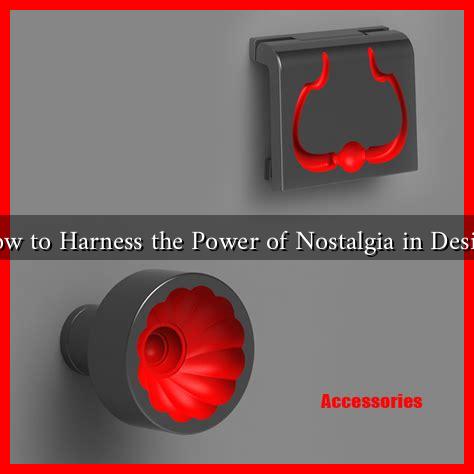-
Table of Contents
How to Harness the Power of Nostalgia in Design
Nostalgia is a powerful emotion that can evoke feelings of warmth, comfort, and familiarity. In the world of design, tapping into this sentiment can create a strong connection between the product and the consumer. By understanding how to effectively harness nostalgia, designers can create compelling experiences that resonate deeply with their audience. This article explores the significance of nostalgia in design, offers practical strategies for implementation, and showcases successful examples from various industries.
The Psychology of Nostalgia
Nostalgia is more than just a sentimental longing for the past; it is a complex emotional experience that can influence consumer behavior. Research indicates that nostalgia can enhance mood, increase feelings of social connectedness, and even boost self-esteem. According to a study published in the journal *Psychological Science*, nostalgic memories can lead to increased optimism and a greater sense of meaning in life.
Understanding the psychological underpinnings of nostalgia is crucial for designers. By leveraging this emotion, designers can create products and experiences that not only attract attention but also foster loyalty and engagement. Here are some key psychological benefits of nostalgia in design:
- Emotional Connection: Nostalgic designs can evoke personal memories, creating a bond between the consumer and the product.
- Brand Loyalty: Brands that successfully evoke nostalgia can cultivate a loyal customer base, as consumers often return to what they know and love.
- Enhanced Experience: Nostalgia can enhance the overall experience of a product, making it more enjoyable and memorable.
Strategies for Incorporating Nostalgia in Design
To effectively harness nostalgia in design, consider the following strategies:
- Use Retro Aesthetics: Incorporate design elements from past decades, such as typography, color palettes, and imagery. For example, the resurgence of 80s and 90s aesthetics in fashion and graphic design has captivated a wide audience.
- Storytelling: Create narratives that evoke nostalgic memories. Brands like Coca-Cola often use storytelling in their advertising to connect with consumers on an emotional level.
- Familiar Icons: Utilize recognizable symbols or characters from the past. For instance, the reintroduction of classic video game characters in modern gaming has attracted both new players and nostalgic fans.
- Personalization: Allow consumers to customize products with nostalgic elements, such as vintage designs or personal memories. This approach can enhance emotional engagement.
Case Studies: Successful Nostalgic Design
Several brands have successfully harnessed nostalgia in their design strategies, leading to increased consumer engagement and sales. Here are a few notable examples:
- LEGO: The iconic toy brand has successfully tapped into nostalgia by re-releasing classic sets and collaborating with popular franchises like Star Wars and Harry Potter. This strategy appeals to both children and adults who grew up with LEGO.
- Polaroid: The revival of instant photography through Polaroid’s new cameras and film has sparked nostalgia among consumers who remember the joy of instant prints. The brand’s marketing emphasizes the emotional connection to capturing memories.
- Netflix: The streaming giant has capitalized on nostalgia by reviving classic shows and films, such as *Stranger Things*, which is heavily influenced by 80s pop culture. This strategy has attracted a diverse audience, from millennials to Gen Z.
Statistics Supporting Nostalgia in Marketing
Numerous studies highlight the effectiveness of nostalgia in marketing and design:
- A study by the *Journal of Consumer Research* found that nostalgic advertisements led to a 20% increase in purchase intentions.
- According to a survey by *Nostalgia Marketing*, 60% of consumers reported feeling more positive about brands that evoke nostalgic feelings.
- Research from *The Journal of Advertising* indicates that nostalgia can enhance brand recall by up to 30%.
Conclusion
Harnessing the power of nostalgia in design can create meaningful connections between brands and consumers. By understanding the psychological impact of nostalgia and implementing effective strategies, designers can evoke emotions that lead to increased engagement and loyalty. As demonstrated by successful case studies, nostalgia is not just a fleeting trend; it is a timeless tool that can enhance the consumer experience. As you embark on your design journey, consider how you can incorporate nostalgic elements to create a lasting impact.
For further reading on the psychology of nostalgia and its applications in marketing, check out this insightful article on Psychology Today.


